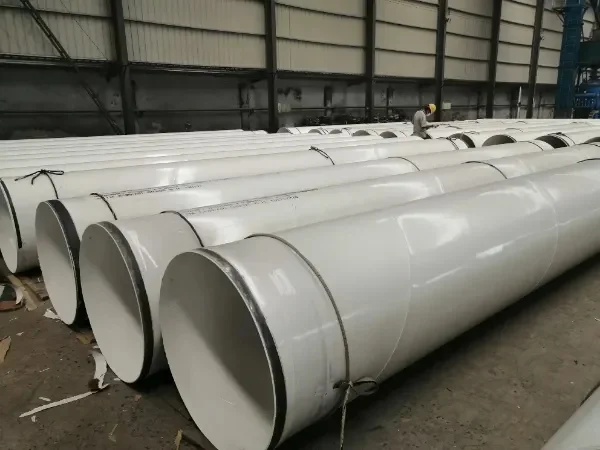Connection mode of steel pipe with anticorrosive coating
Anti-corrosion steel pipe is a commonly used pipeline material, which has the advantages of anti-corrosion, wear resistance, pressure resistance, etc., and is widely used in petroleum, chemical, natural gas, and other fields. When using anti-corrosion steel pipes, the connection method is a very important part. Different connection methods will affect the use effect and safety of the pipeline. The following is a discussion on the connection method of the steel pipe with an anti-corrosion layer.

1. Solder connection
Welding connection is a commonly used connection method, which can ensure the tightness and strength of the pipeline. When welding the connection, the two ends of the pipe need to be cut and chamfered first, then butt jointed, and finally welded. The advantages of welded connections are high connection strength and good sealing performance and are suitable for high-pressure, high-temperature, and large-diameter pipelines. However, the welding connection requires professional technology and equipment, the operation is difficult, and thermal stress will be generated during the welding process, which may easily lead to deformation and cracks in the pipeline.
2. Thread connection
The threaded connection is a simple and easy connection method, which is suitable for small-diameter and low-pressure pipes. When screwing, it is necessary to process threads at both ends of the pipe, and then connect the two ends through the rotation of the threads. The advantage of a threaded connection is that it is easy to operate and does not require professional skills and equipment, but the connection strength is low, the sealing is poor, and it is easy to loosen and leak.
3. Flange connection
Flange connection is a commonly used connection method, which is suitable for pipes of various diameters and pressure levels. In the flange connection, it is necessary to process flanges at both ends of the pipeline, and then connect the flanges at both ends with bolts. The advantages of flange connection are high connection strength, good sealing, and easy disassembly, and maintenance, but it requires professional technology and equipment, and the cost of flange connection is relatively high.
4. Pipe clamp connection
The pipe clip connection is to connect two steel pipes together through a pipe clip connector. The advantage of this connection method is that it is convenient to connect, does not require professional technology and equipment, and has a low cost. However, the pipe clip connection is easy to loosen, requires regular inspection and maintenance, and the anti-corrosion effect is not as good as that of the welded connection.
In short, the connection method of the anti-corrosion steel pipe is a very important part, and different connection methods are suitable for different pipeline conditions and requirements. When choosing a connection method, it is necessary to comprehensively consider factors such as the diameter, pressure, temperature, and medium of the pipeline, and choose the most suitable connection method to ensure the safety and reliability of the pipeline. At the same time, no matter what connection method is used, regular inspection and maintenance are required to ensure a firm connection and anti-corrosion effect.
How to choose the appropriate anticorrosive coating pipeline manufacturer?
Types and characteristics of anticorrosive coating pipeline
How to Distinguish the Quality of Anti-corrosion Coating Pipes
Classification and characteristics of anticorrosive coatings
The difference between insulated pipe and anticorrosive pipe
The importance of anticorrosive coating to pipeline construction
Method for testing the quality of anti-corrosion coatings on steel pipes






